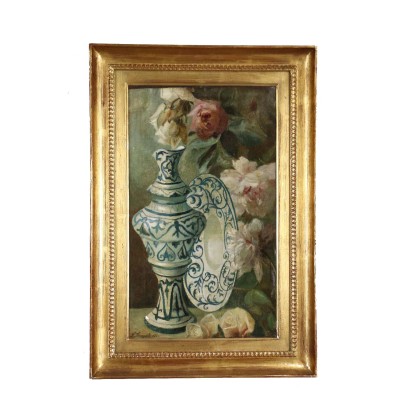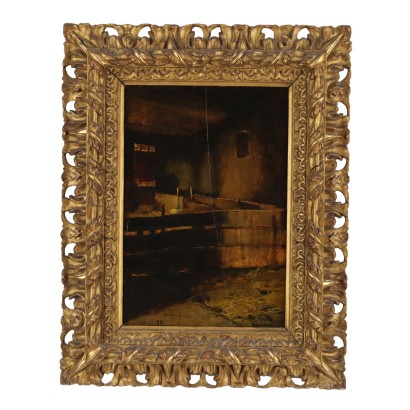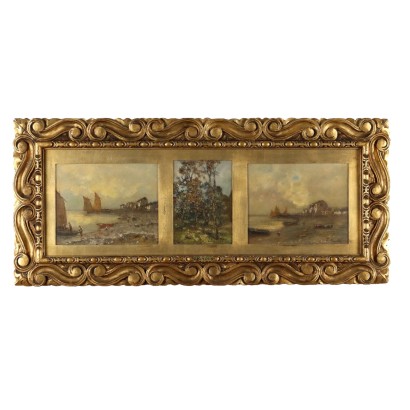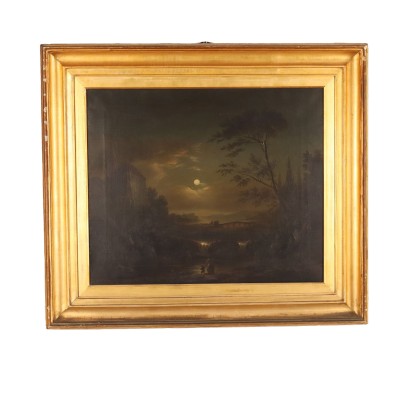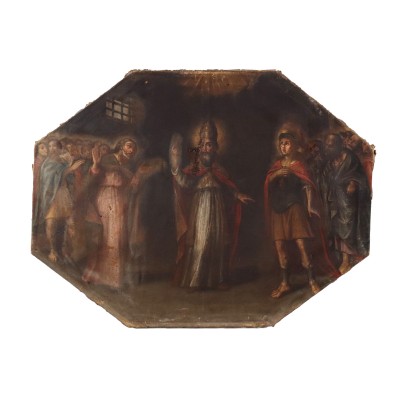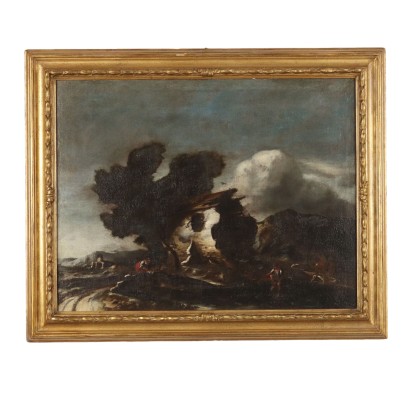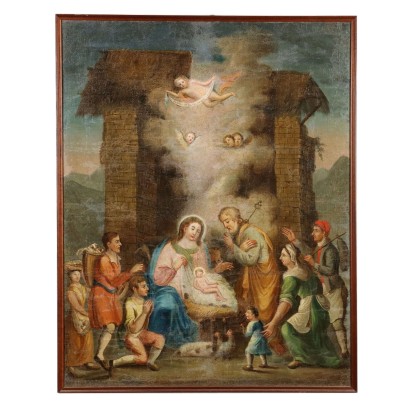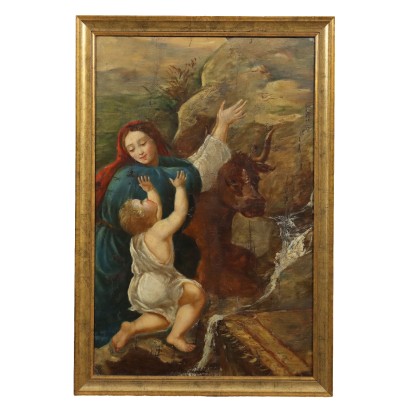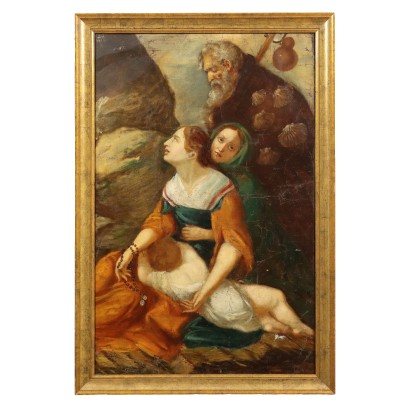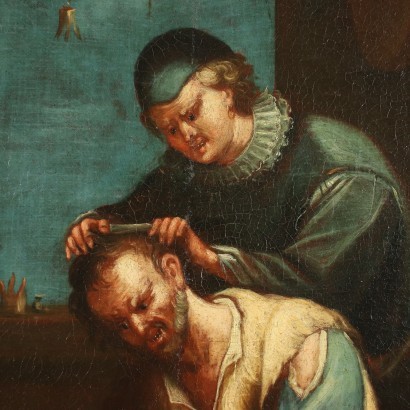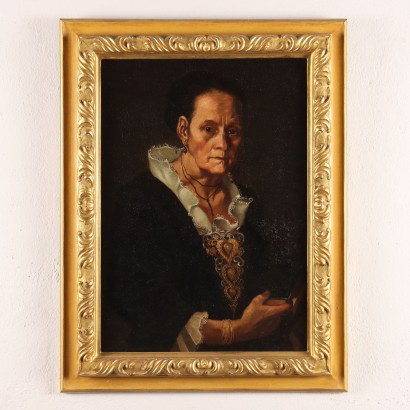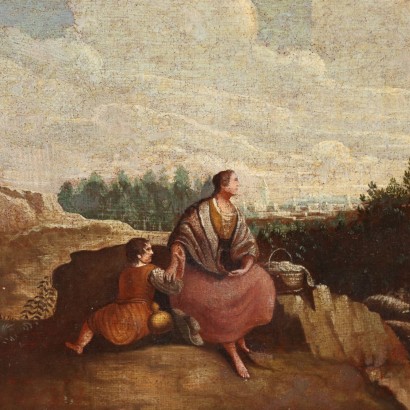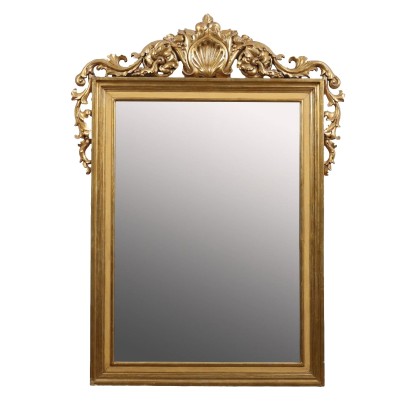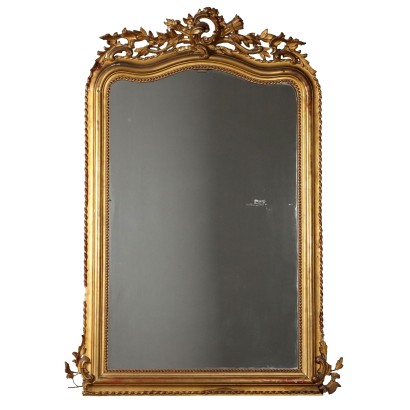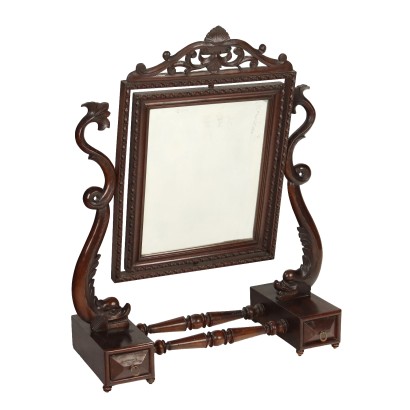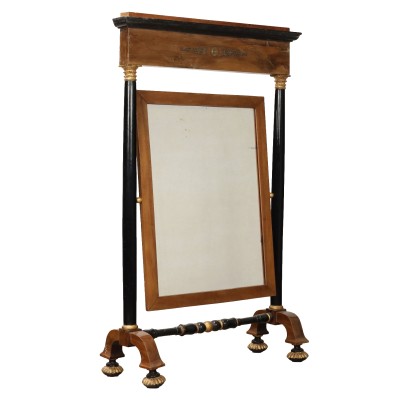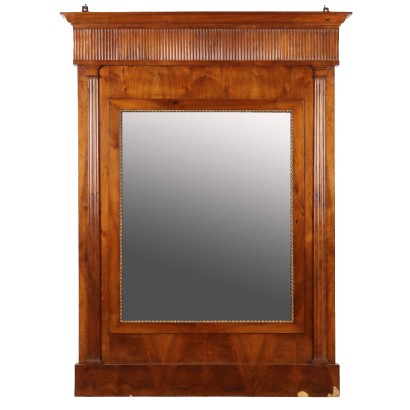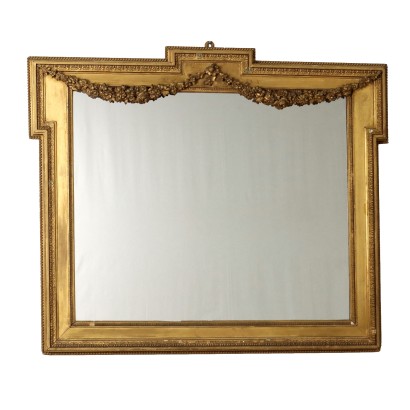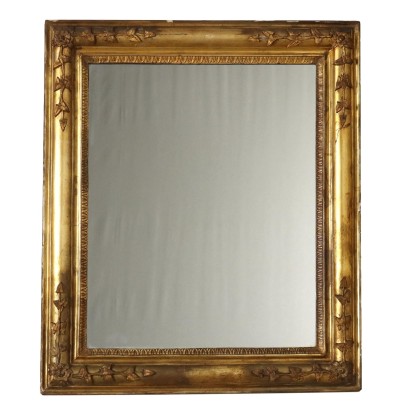L. Scrosati Oil on Canvas Italy 1860 - Vase, Roman excavations, 1860
Features
Vase, Roman excavations, 1860
Artist: Luigi Scrosati (1814-1869)
Artwork title: Vaso, scavi romani
Age: 19th Century / 1801 - 1900
Subject: Composizione
Origin: Italy
Description : Vaso, scavi romani
Oil painting on canvas. Signed and dated lower left. Further signature, date and title on the back. On the frame there is a stamp from an important private collection. The work proposes a composition of an amphora and a painted ceramic plate, surrounded on the right by roses. Milanese painter and decorator, Luigi Scrosati initially attended the Brera Academy, which he soon abandoned to devote himself to numerous trips abroad, in particular to Paris. Already from the beginning of his activity, in the 40s, he worked as a painter of still lifes strongly influenced by French examples, in particular from the Lyon school. Alongside the easel and watercolor production, dominated by the specialization of still life of flowers, Scrosati was very active as an interior decorator, often engaged in team work alongside architects and project managers, but always with considerable autonomy and a characteristic style , substantially eclectic and aimed at a reinterpretation of the styles of the past. The debut in this area, towards the end of 1842, consists of a cycle of frescoes in the residence of San Fiorano (LO) owned by Giorgio Guido Pallavicino Trivulzio, for which Scrosati decorated a Gothic room, a Rococo living room and a small entrance compartment. His frescoes can be found in numerous villas in and around Milan, works in which Scrosati refers to the styles of the past, re-proposing eighteenth-century suggestions, but also of the Baroque. The decorations in the Dante's Cabinet first and then in other rooms in the Palazzo Poldi Pezzoli in Milan (now home to the Museum of the same name) were instead of neo-medieval taste, made with the Bertini team of which Scorsati was part. The disease that struck Scrosati in the lower limbs in 1857, making him ill, probably prevented him from continuing his activity as a decorator, forcing him to fall back on floral easel painting, which led him to produce still lifes of flowers, but also portraits or fake bas-reliefs with garlands of flowers or even interiors and genre scenes, in which he was influenced by the German and Viennese production of the Biedermeier type and the French one of the Lyon school. In 1862 Scrosati was commissioned to direct a new Ornato course at the Brera Academy, with particular reference to flower painting and relations with industry, a course set up by the Braidense institution to expand the already flourishing school of ornamental painting. The work is presented in a style frame.
Product Condition:
Product in good condition, with small signs of wear.
Frame Size (cm):
Height: 64
Width: 44
Depth: 5,5
Artwork dimensions (cm):
Height: 50
Width: 30
Additional Information
Artist: Luigi Scrosati (1814-1869)
Born in 1814 in Milan, where he lived and worked, Luigi Scrosati was a painter and decorator. He initially attended the Brera Academy, which he soon abandoned to dedicate himself to numerous trips abroad, particularly to Paris. Already from the beginning of his activity, in the 1940s, he worked as a still life painter, strongly influenced by French examples, in particular by the Lyon school. Alongside his easel and watercolor production, dominated by the specialization of still lifes of flowers, Scrosati was very active as an interior decorator, often involved in team work alongside architects and project managers, but always with considerable autonomy and a characteristic style , substantially eclectic and aimed at a reinterpretation of the styles of the past. The debut in this area, towards the end of 1842, consisted of a cycle of frescoes in the residence of San Fiorano (LO) owned by Giorgio Guido Pallavicino Trivulzio, for which Scrosati decorated a Gothic room, a Rococo lounge and a small entrance hall. His frescoes can be found in numerous villas in and around Milan, works in which Scrosati harks back to the styles of the past, re-proposing eighteenth-century and Baroque suggestions. The decorations of Dante's Cabinet first and then of other rooms in the Poldi Pezzoli palace in Milan (now home to the Museum of the same name) were instead of neo-medieval style, created with Bertini's team of which Scorsati was part. The illness that affected Scrosati's lower limbs in 1857, making him ill, probably prevented him from continuing his activity as a decorator, forcing him to fall back on floral easel painting, which led him to produce still lifes of flowers, but also portraits or fake bas-reliefs with garlands of flowers or even interiors and genre scenes, in which he was influenced by the German and Viennese Biedermeier-type production and the French one by the Lyon school. In 1862 Scrosati was commissioned to direct a new course in Ornament at the Brera Academy, with particular reference to flower painting and relations with industry, a course wanted by the Braidense institution to expand the already flourishing school of ornamental painting. Scrosati died in Milan in 1869.Age: 19th Century / 1801 - 1900
19th Century / 1801 - 1900Subject: Composizione
Other customers have searched:
Arte Novecento, dipinti del 900, olio su tavola, pittura olio su tela, arte 800, pittura antica, arte contemporanea, quadro del '900, quadro grande, quadro olio su tela..
Se sei un appassionato d'arte, non perderti i nostri approfondimenti sul Blog Arte Di Mano in Mano e su FineArt by Di Mano in Mano - Arte:
Leggi di più
Ecco alcuni tra i principali articoli:
Vedute
Falsi nell'arte antica
Un messaggio di fiducia per ripartire
La potenza espressiva dell'arte figurativa etiope
Breve Storia del Collezionismo
Giorgio Upiglio, maestro dei libri d'artista
Matthias Withoos detto "Calzetta bianca"
San Rocco pensaci tu - Classic Monday
Ecco alcuni esempi dell'arte del Novecento più bella che puoi trovare da noi:
I Raccoglitori di patate - Lavoro estivo - Augusto Colombo, 1935
I Taglialegna - Lavoro invernale - Augusto Colombo, 1933
Il lavoro femminile, Contardo Barbieri, 1954 ca.
Sapevi che l'arte può essere anche un ottimo investimento (e non solo per grandi portafogli)?
L'Arte tra Collezionismo e Investimento
FineArt: Arte come investimento
Dai un'occhiata alle nostre rubriche di divulgazione sull'arte:
Epoche
Lavorazioni e tecniche
Mostre ed Eventi
Protagonisti
Leggi di più
Ecco alcuni tra i principali articoli:Vedute
Falsi nell'arte antica
Un messaggio di fiducia per ripartire
La potenza espressiva dell'arte figurativa etiope
Breve Storia del Collezionismo
Giorgio Upiglio, maestro dei libri d'artista
Matthias Withoos detto "Calzetta bianca"
San Rocco pensaci tu - Classic Monday
Ecco alcuni esempi dell'arte del Novecento più bella che puoi trovare da noi:
I Raccoglitori di patate - Lavoro estivo - Augusto Colombo, 1935
I Taglialegna - Lavoro invernale - Augusto Colombo, 1933
Il lavoro femminile, Contardo Barbieri, 1954 ca.
Sapevi che l'arte può essere anche un ottimo investimento (e non solo per grandi portafogli)?
L'Arte tra Collezionismo e Investimento
FineArt: Arte come investimento
Dai un'occhiata alle nostre rubriche di divulgazione sull'arte:
Epoche
Lavorazioni e tecniche
Mostre ed Eventi
Protagonisti



